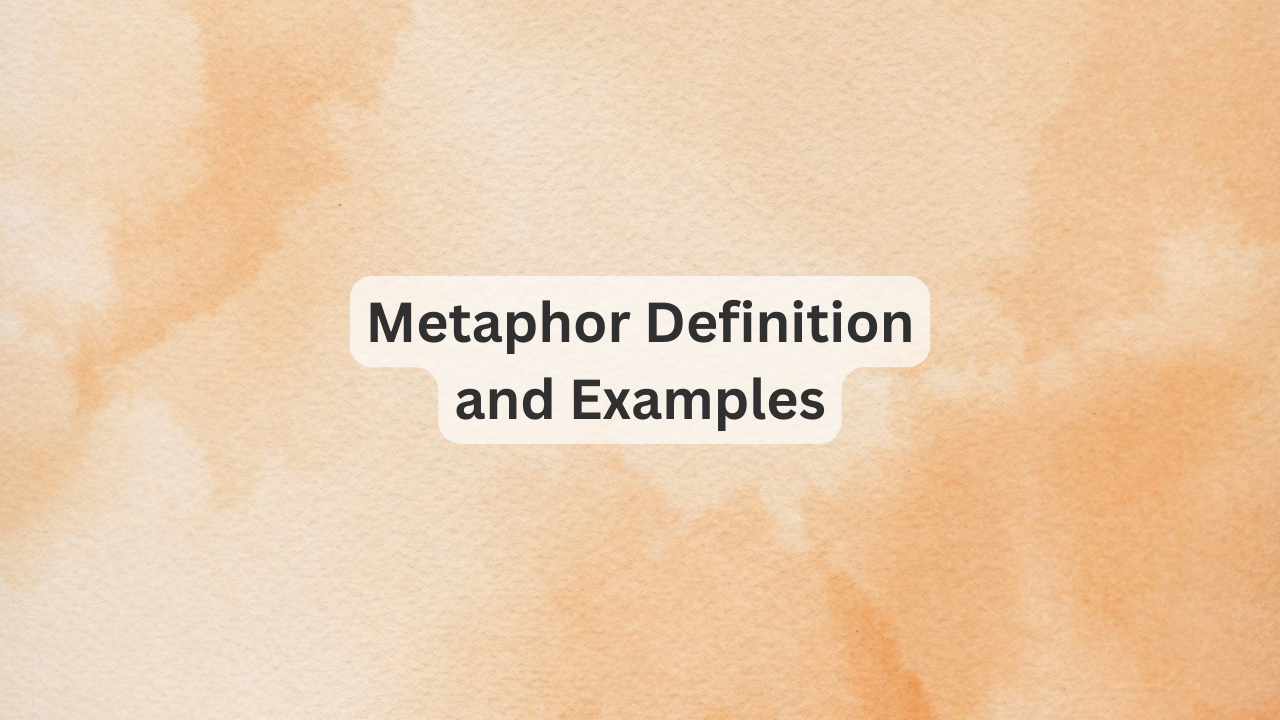If similes are the friendly comparisons that use “like” or “as,” then metaphors are their cooler, more mysterious cousins who don’t need such obvious introductions. A metaphor is when you say one thing is another, even though, let’s be real, it’s totally not. But by doing so, you create an image or feeling that is far more vivid than just stating the plain facts. Metaphors take the ordinary and make it extraordinary—like turning a pumpkin into a carriage, but with words.
In short, a metaphor compares two unlike things by saying they’re the same, making the abstract feel real and relatable. Let’s break it down and have some fun with a few examples.
Metaphor Definition: The Art of Bold Comparisons
A metaphor is a figure of speech that describes one thing by directly comparing it to something else, without using “like” or “as.” It’s about bold declarations. You’re not just as tired as a worn-out shoe—you are the shoe. It’s a linguistic leap that doesn’t hold your hand, but trust me, it’s a fun jump.
Metaphor Examples That Shine Brighter Than the Sun
- Time is a thief.
(You can’t see it, but it’s definitely swiping your minutes when you’re not looking.) - The world is a stage.
(And we’re all just actors, figuring out our lines as we go.) - Her heart was a stone.
(Icy cold and tough, but hopefully with a warm core somewhere inside.) - Life is a rollercoaster.
(Full of ups, downs, and maybe a few surprise drops that make you scream.) - He’s a walking encyclopedia.
(He might not have pages, but his brain is packed with more facts than Google.)
Why Metaphors Are So Magical
Metaphors take abstract or complex ideas and make them feel tangible and emotional. By saying “love is a battlefield,” for example, you’re not just describing a romantic relationship—you’re pulling readers into an epic struggle, with all the triumphs and heartaches that come with it.
They’re also great at making language colorful and engaging. Why say “I’m really busy” when you could say “I’m juggling ten things at once” (even if you’re only juggling emails and laundry)?
Frequently Asked Questions
What’s the difference between a metaphor and a simile?
A simile compares two things using “like” or “as,” while a metaphor goes straight for the bold comparison, saying one thing is another. Simile: “He’s like a bear.” Metaphor: “He is a bear.”
Why are metaphors important in writing?
Metaphors create vivid imagery, making abstract ideas feel concrete. They help readers connect emotionally and understand complex concepts with ease.
Can metaphors be funny?
Absolutely! Metaphors can add humor to language by taking unexpected leaps, like saying “His ideas were a salad of confusion”—because, honestly, who wouldn’t laugh at that?
Conclusion
Metaphors are the creative sparks that turn everyday language into something unforgettable. They help us see the world in new ways, paint vivid mental pictures, and keep communication from feeling dry. So, the next time you’re about to say something plainly, throw in a metaphor—it’s a breath of fresh air for any conversation.

I appreciate your wp design, exactly where do you download it from?
I like this internet site because so much useful stuff on here : D.
Thanks a bunch for sharing this with all of us you really know what you are talking about! Bookmarked. Kindly also visit my website =). We could have a link exchange agreement between us!
I was suggested this website by my cousin. I’m not sure whether this post is written by him as nobody else know such detailed about my difficulty. You’re incredible! Thanks!
I know this if off topic but I’m looking into starting my own blog and was curious what all is required to get setup? I’m assuming having a blog like yours would cost a pretty penny? I’m not very internet savvy so I’m not 100 certain. Any suggestions or advice would be greatly appreciated. Many thanks
You really make it seem so easy with your presentation but I find this topic to be actually something which I think I would never understand. It seems too complex and very broad for me. I’m looking forward for your next post, I will try to get the hang of it!
I loved as much as you’ll receive carried out right here. The sketch is attractive, your authored material stylish. nonetheless, you command get got an impatience over that you wish be delivering the following. unwell unquestionably come further formerly again as exactly the same nearly a lot often inside case you shield this hike.
I’m extremely inspired along with your writing skills as neatly as with the format on your weblog. Is this a paid theme or did you modify it yourself? Anyway stay up the excellent quality writing, it’s uncommon to look a great weblog like this one nowadays..